A piece about specimen trees in the on-line magazine Gardenista started me thinking about trees and how special they are to me. Having recently planted a long allée of crabapple trees at Glen Villa, (and having written about it here) where the impact stems from the sheer number of trees and the precision of their placement, my mind swung to the opposite end of the spectrum, to individual trees that make an impact on their own.
The most important tree at Glen Villa, my garden in rural Quebec, is the basswood, or linden as I prefer to call it, that stands at the end of the Big Meadow. This tree is the garden’s signature tree. It is the focal point of the view from our kitchen window and even in the fog that almost obscured it a few days ago, it stood out as something special.
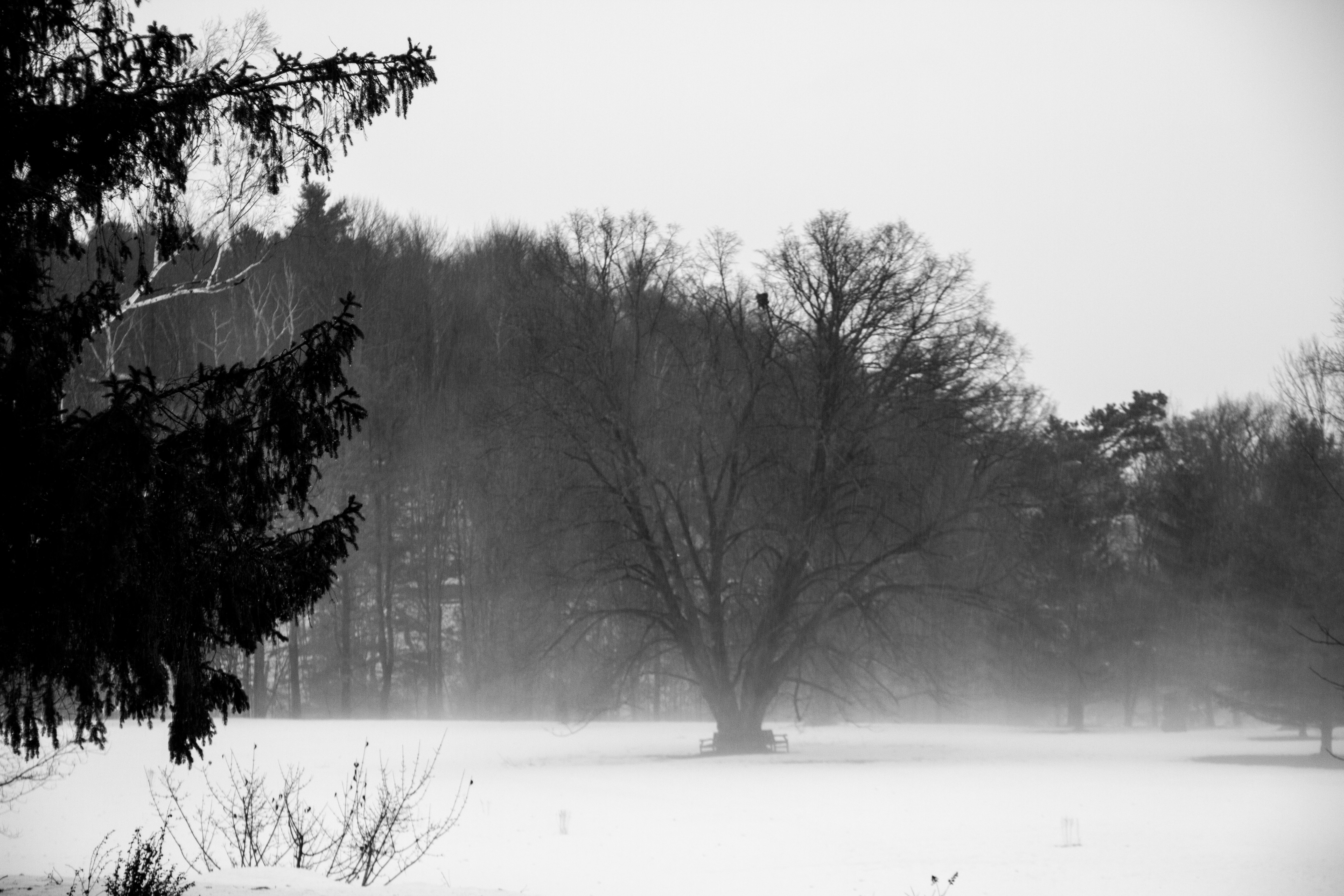
There was so little colour that I took this photo in black and white.
The linden is special in every season. It is spectacular in autumn….
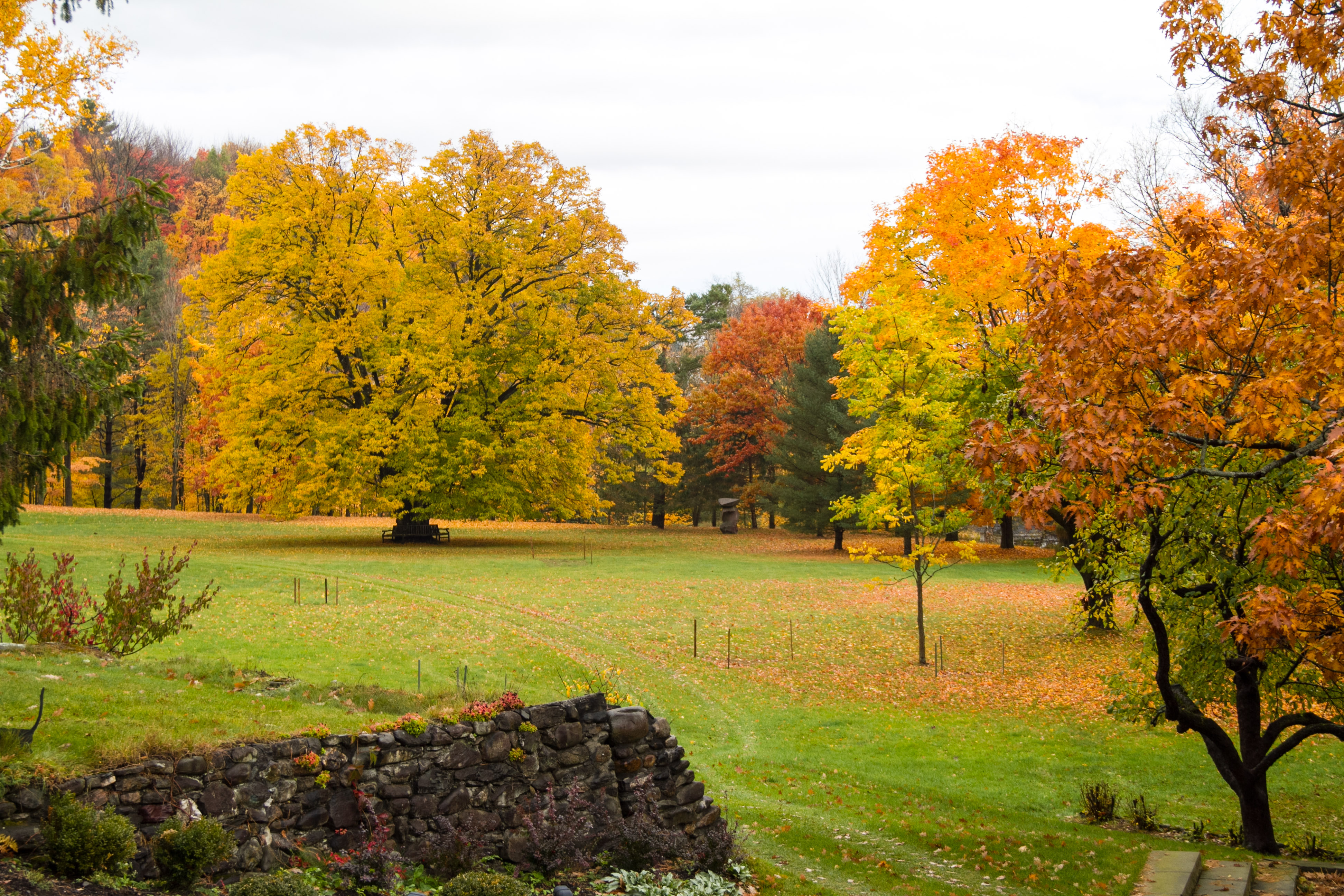
The linden starts as pure gold and changes gradually to liquid honey.
… gloriously green in mid-summer…
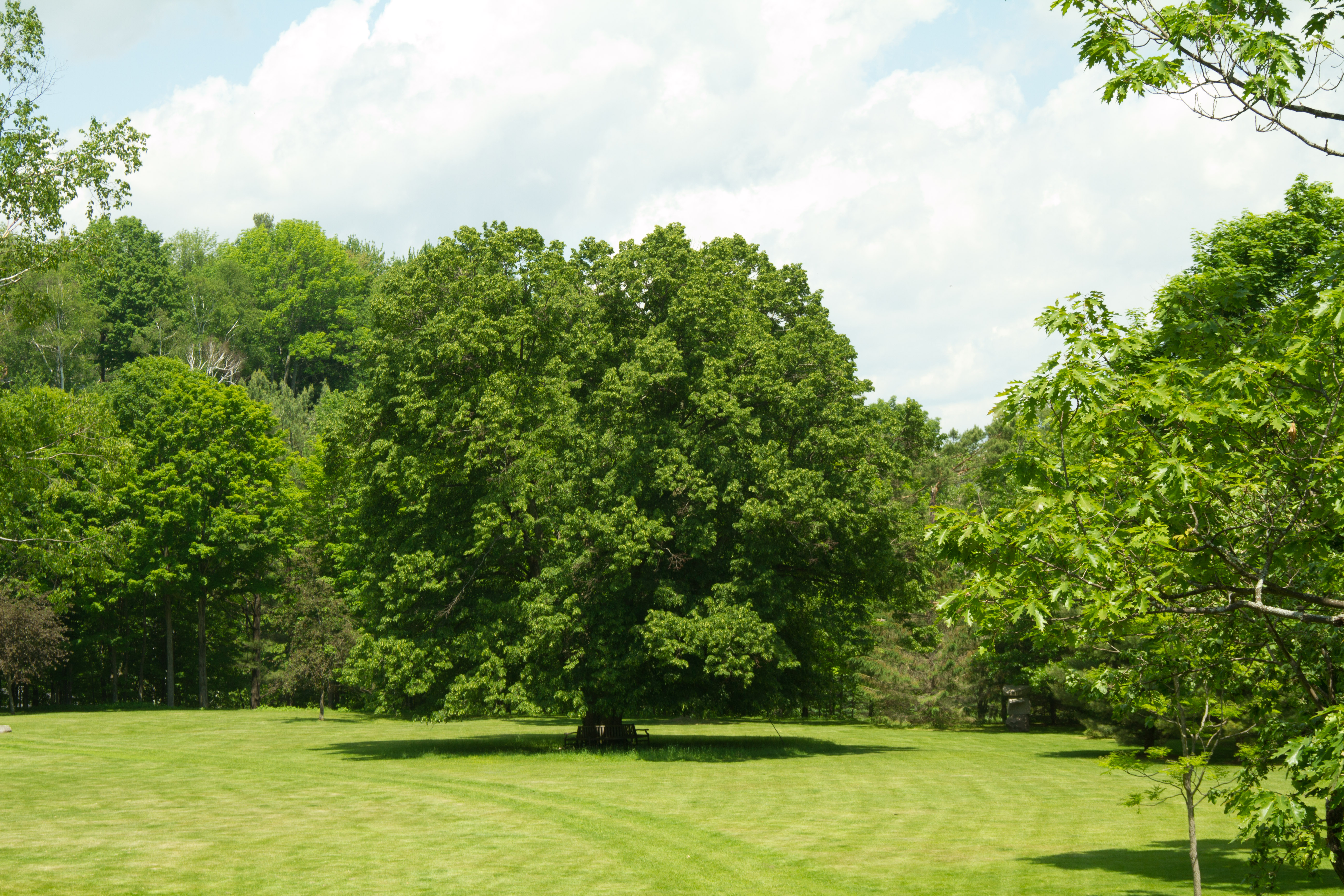
The shape of the tree adds immensely to its appeal.
… and a shimmer of light in early spring.
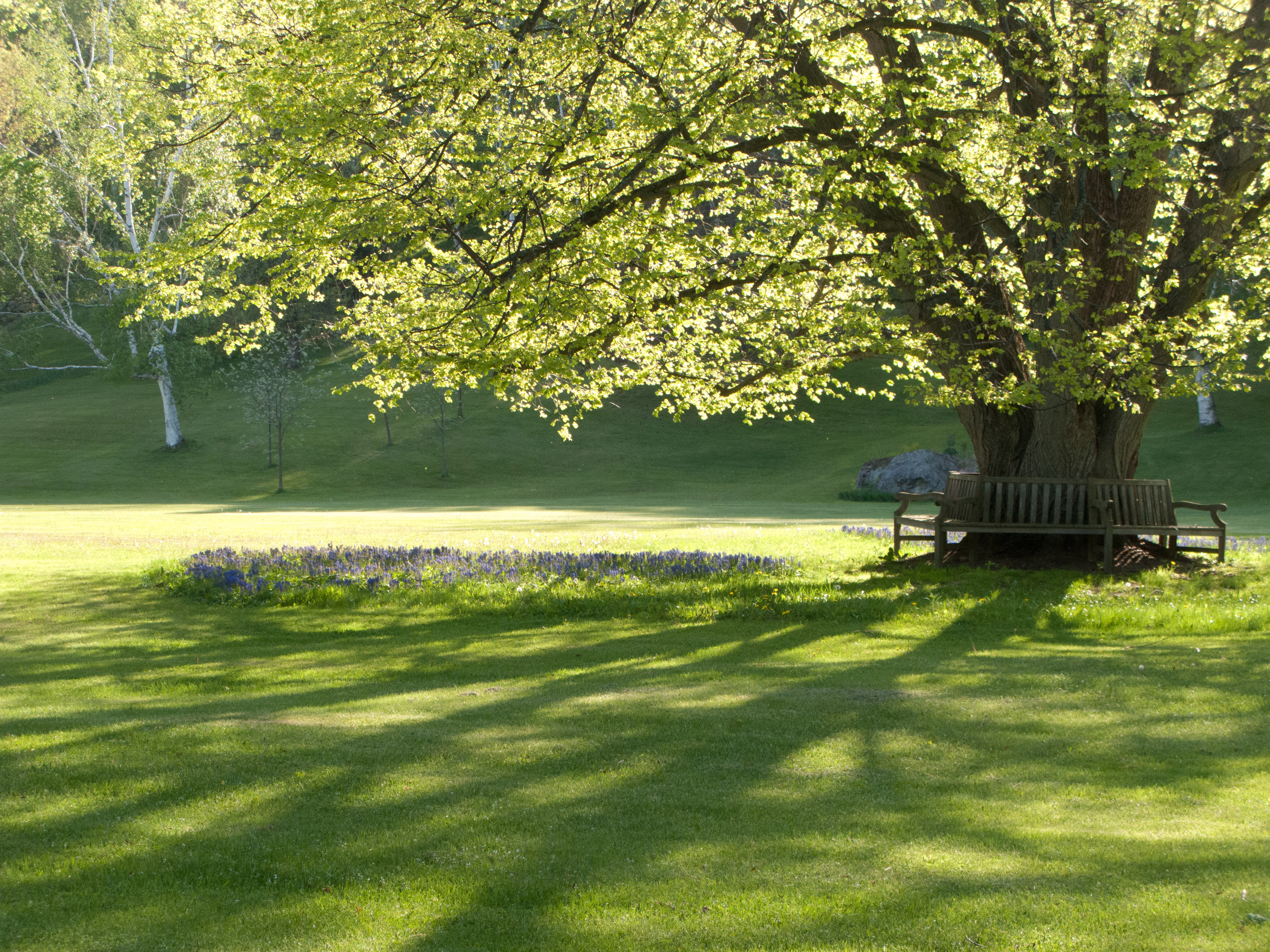
You can make out a few muscari or grape hyacinth just coming into bloom underneath the tree. I added bulbs for several years; now a blue haze covers the ground in spring.
The linden tree is special, but it isn’t the only special tree at Glen Villa. An old maple tree that for obvious reasons I call the Semaphore Tree signals the letter O non-stop. (Is the O a smoke ring signalling danger or a sign of sudden comprehension? I wish I knew.)

This maple tree was planted over 100 years ago when the resort hotel, Glen Villa Inn, was built. The hotel burned to the ground in 1909.
The Semaphore Tree makes me laugh, as does the Grass Snake Tree close by.
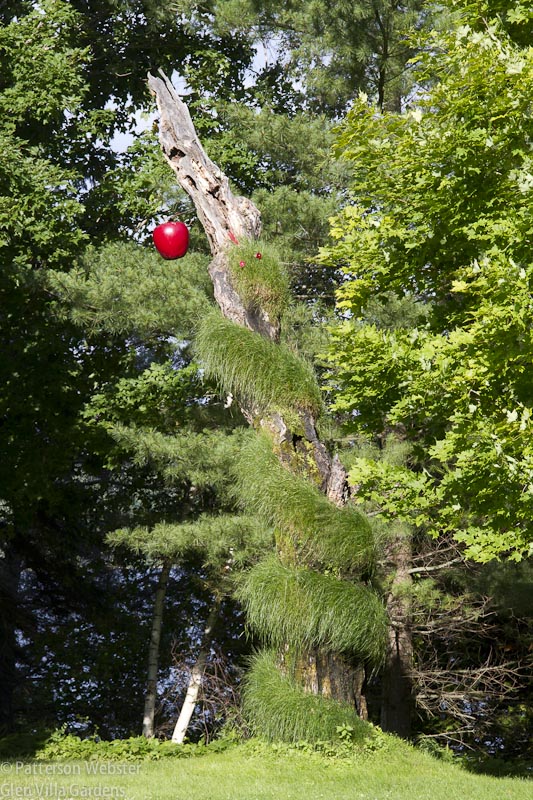
The grass snaking its way up the tree makes everyone laugh, particularly when they notice the apple, just out of reach.
Other trees speak to me more softly. A small horse chestnut tree I planted some years ago announces the on-set of fall. It is always the first to change colour and while that should make me sad, the peachy tones that I know will change to fiery red make me content to welcome the inevitable.

I took this photo on August 22, 2017. It was a shock to see the tree beginning to change colour that early.
So what if summer is over, I tell myself. The beauty of autumn will make up for it.

I took this photo on Sept 8, 2017. A few days later, all the leaves had dropped.
Other trees have inspired me to create art installations. A dead pine tree determined the location of a trail through the woods. A few years later the trail became a meditative walk called In Transit/En Route, where the tree plays an essential role. (You can read about the process of creating In Transit/En Route in a three-part series I wrote several years ago: here, here and here.)
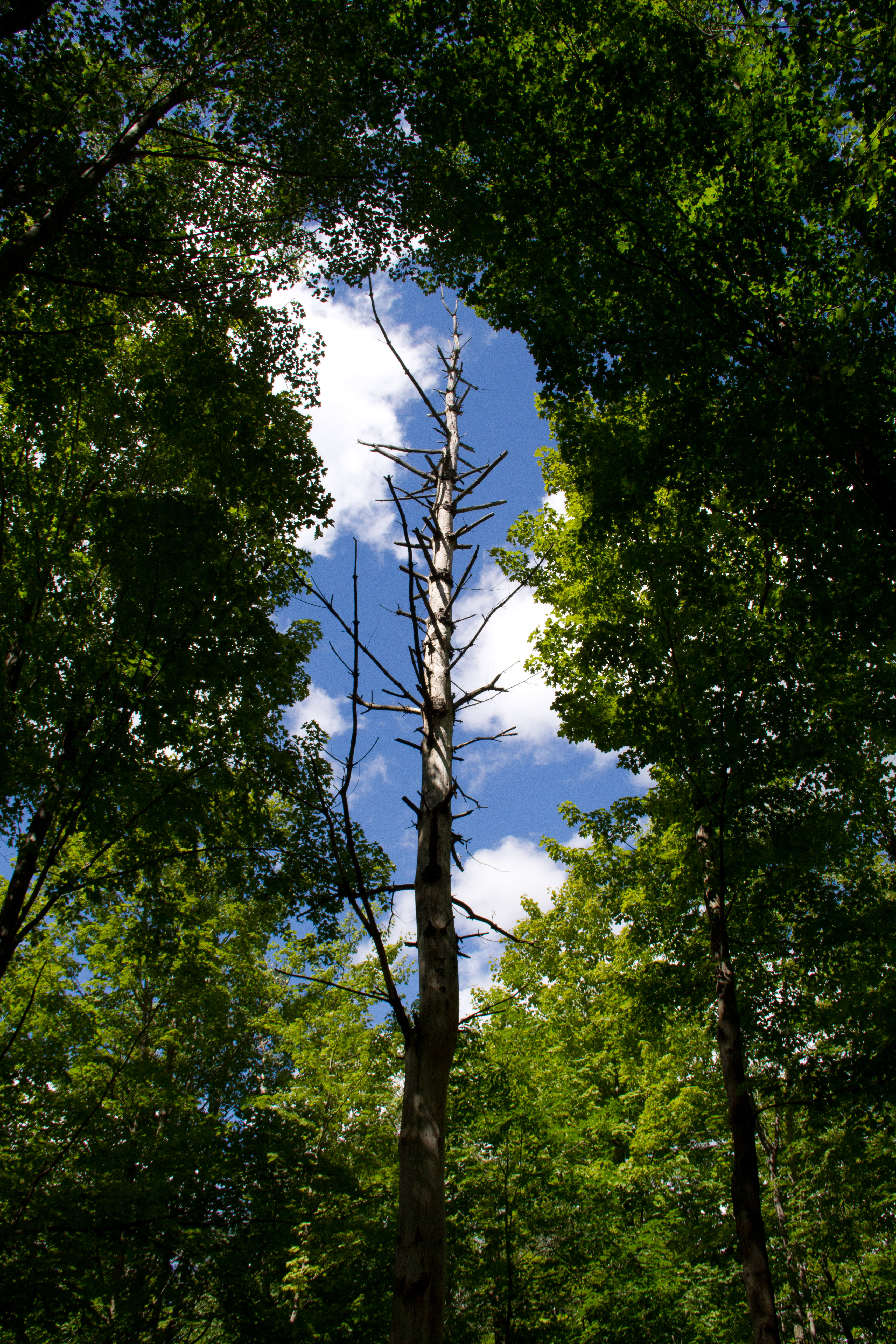
The shadow of this tree falls on posts that mark the hours, transforming the tree into the gnomon or pointer, and the clearing around it into a sundial.
When it was struck by lightning, another dead tree at the edge of a field became the spark that ignited Abenaki Walking, an installation that chronicles the story of the original inhabitants of this part of Quebec.
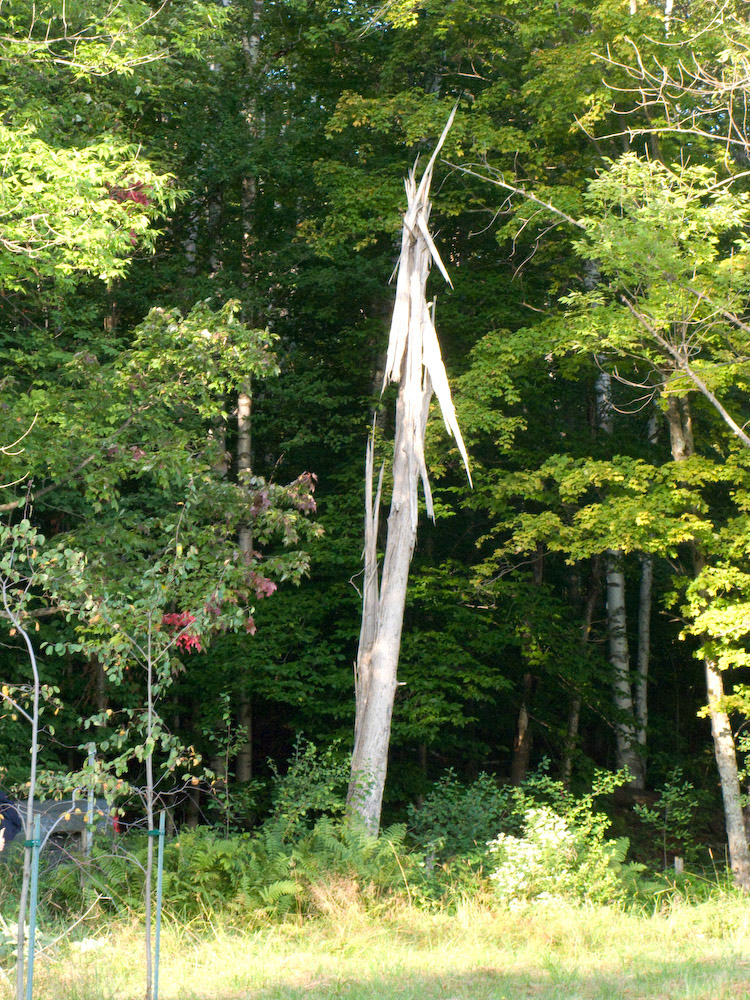
The name for this tree was obvious — the lightning tree. Unfortunately, it is no longer standing.
Dead trees speak to me. Only a section of the trunk now remains of what must once have been an impressive specimen — a maple perhaps? — but its presence inspired a project I’m working on that links tree trunks to Greek columns.
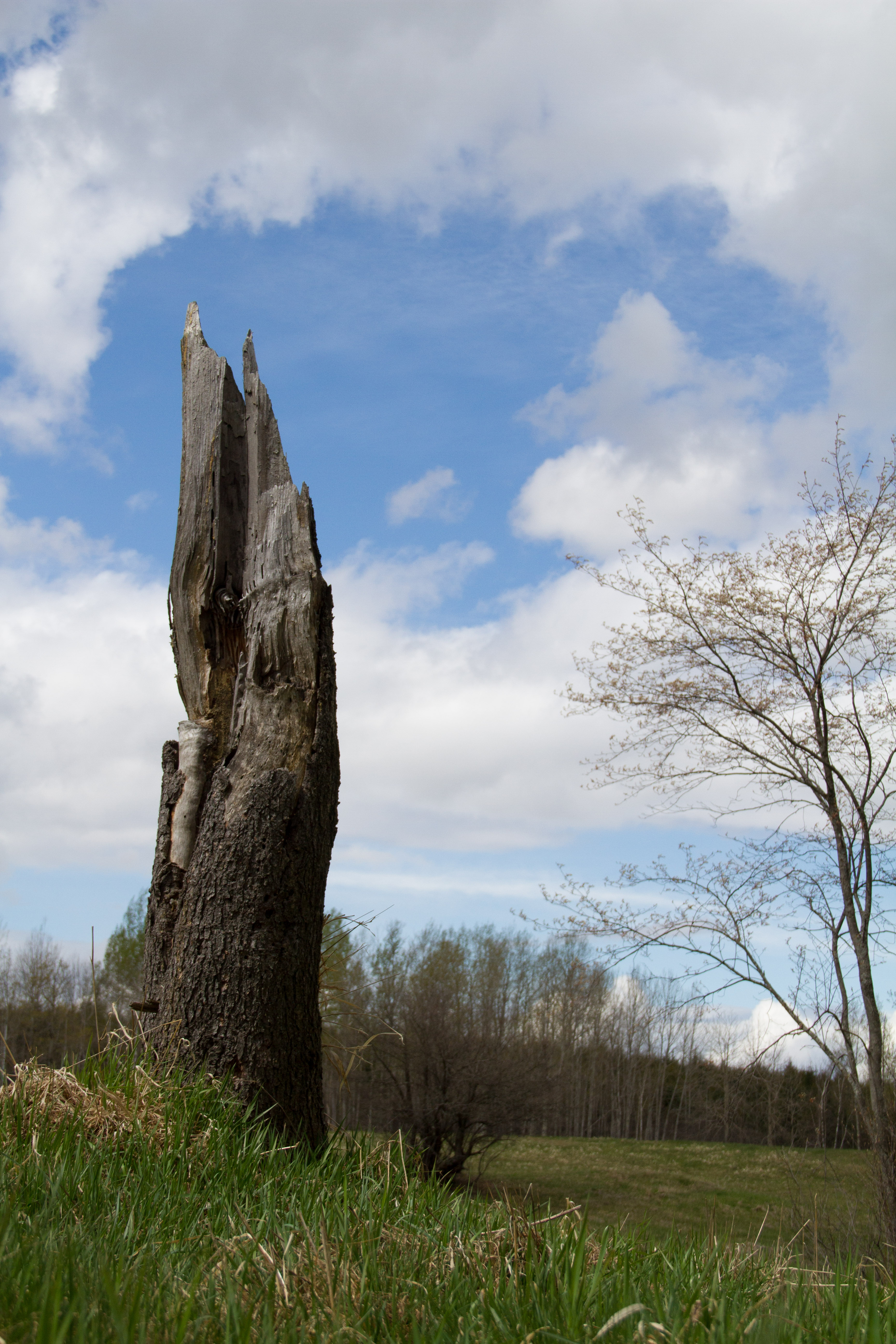
The trunk looks enormous here but that’s because I was flat on my back when I photographed it.
In her book The Inward Garden Julia Moir Messervy writes that our responses to the landscape are shaped by our experiences as children. I know this is true for me. A huge pear tree outside the kitchen door of the first house I remember living in established an axial line that continued to the rear of the garden, and axial lines in gardens still sit happily in my mind. A wide spreading cherry tree that bloomed pale pink outside my bedroom window in the house where we moved when I was 12 whispered romance; I’d put down the book I was reading and imagine a boy climbing the tree to rap on my window and carry me away. The oak tree at the first house my husband and I owned was so large that I thought it had inspired the name of the town, Oakville. The ground shook when a branch fell in the night, waking us both, but leaving a crotch wide enough to hold a tree house where our children played with friends.
The archetypal tree of my childhood, though, was one that grew at my grandparents’ farm in the Blue Ridge Mountains of Virginia. Relatives always called it a poplar; now I know it was a tulip poplar, or Liriodendron tulipifera, named after the shape of the blossoms. The tree stood in a field high above my grandparents’ farmhouse, too far away for a little girl to walk to on her own, but always out there, beckoning, urging me to explore. Over dinner I remember hearing stories that courting couples could walk to the tree since they were always in view from the house. And that once there, they might even become engaged. Or not — paintings of the tree done by two powdery great-aunts hung throughout the house, silent testimony to their old maid status.
I have a photo of the tree that I took the last time I visited my grandparents’ farm in 2003, long after they both had died. Unfortunately I didn’t take a photo from the farmhouse looking up, as I remember the tree most clearly, but from the hilltop looking down.
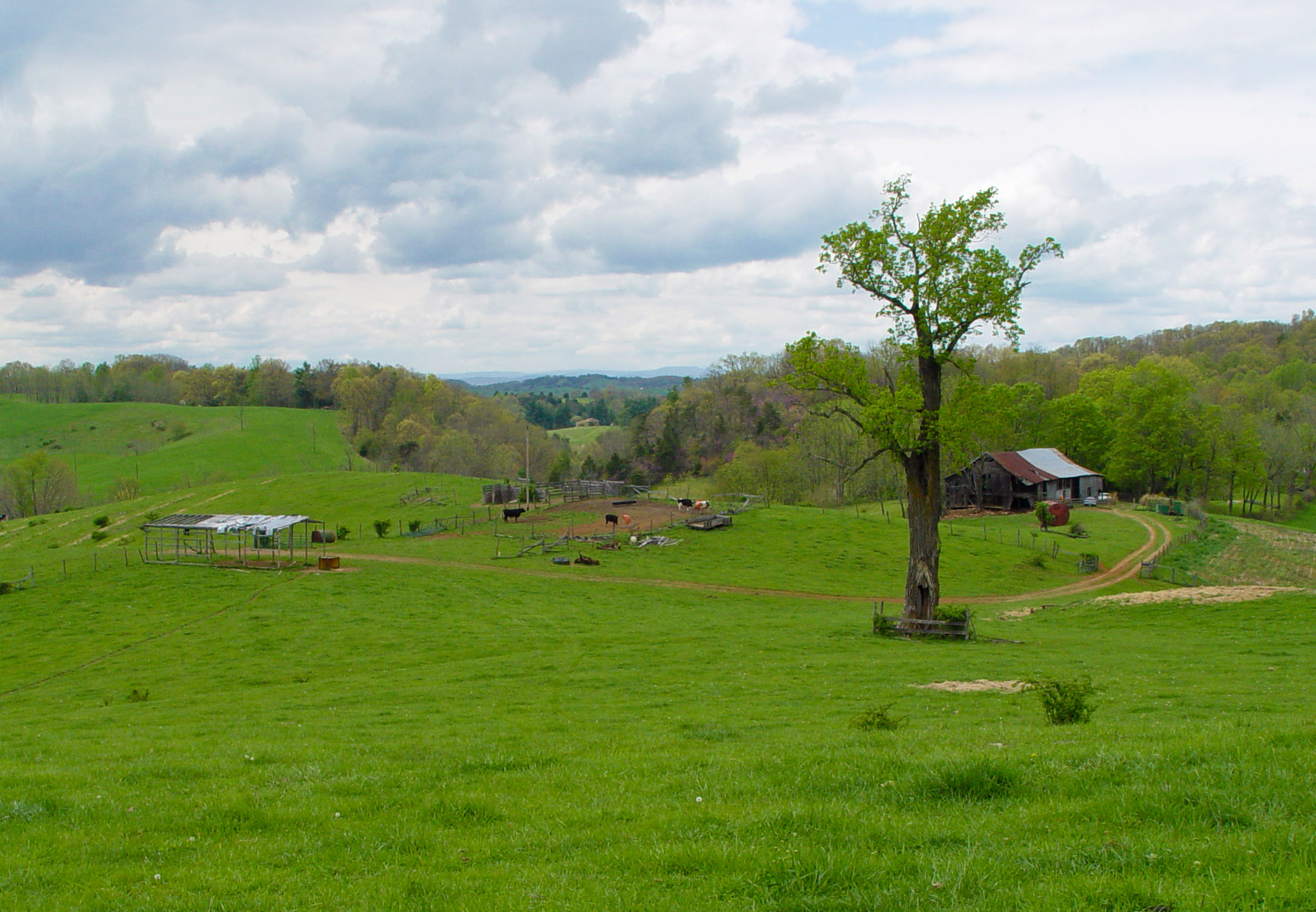
The building on the right of the tree is the old barn. The farmhouse is out of the picture to the right.
Who knows if the tree is still alive? It may well be dead now but no matter — the memory survives.
Are there trees that stand out in your garden, or in your memories? I’d love to hear the stories.






